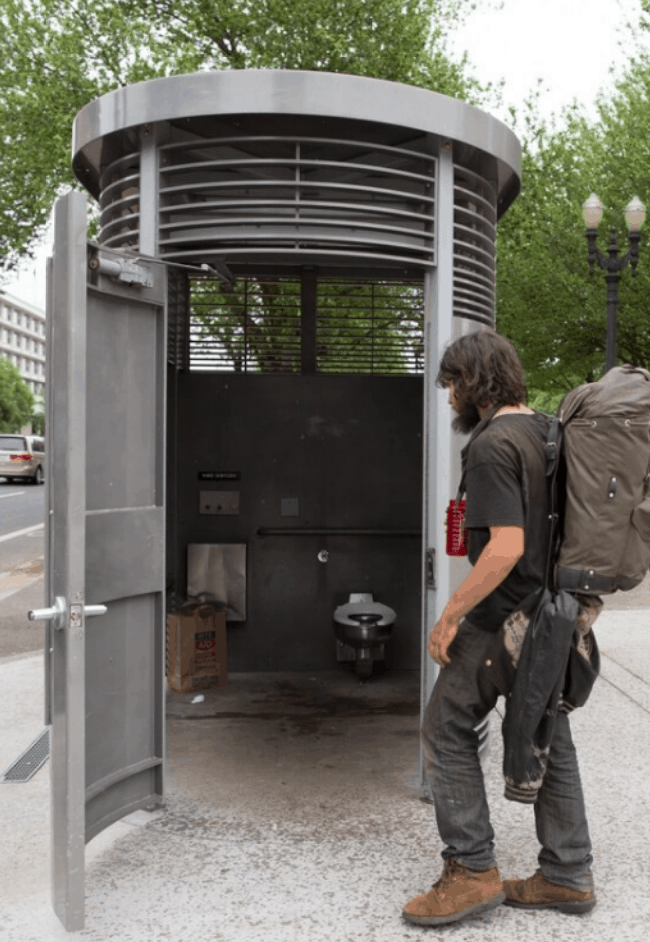Well-designed cost effective public restrooms provide maximum function in minimum space and are safe, accessible, available, attractive and easy to maintain.
The PHLUSH Design Principles for Public Restrooms identify seven essential characteristics of successful facilities and specify the design elements required to meet each. They build on a variety of sources and are aligned with the needs of diverse users and the realities of contemporary urban life.
The working goal of the PHLUSH Public Toilet Design Principles: Cost-effective public restrooms that provide maximum function in minimum space and are safe, accessible, available, attractive and easy to maintain.
Endorsed and approved by neighborhood groups in Portland, Oregon in 2008, these principles guide the work of PHLUSH today. We summarize the seven principles as follows -


- Site restrooms to benefit from natural surveillance by the community.
- Apply Crime Prevention through Environmental Design (CPTED) in location, layout, lighting, surface, materials, fixtures and hardware. Read more about Building Safe Toilet Design into Shared Urban Space.
- Protect users, especially children, from inappropriate contact with strangers in “gang toilets” by providing individual direct entry stalls.
- Design doors to ensure privacy with safety: full length with a 1.5 – 2” gap at the bottom and a lock that authorities can open from the outside in an emergency.
- Activate surrounding area with retail, information kiosks, food carts, street performers, bus stops, or parking pay stations.
Subscribe to our newsletter!
Newsletter Subscription
Why You Should Consider Making Your Restroom More Inclusive (And How To Do It) By Kip Earlywine (Used with permission from Green Flush Restrooms) It’s a beautiful day outside, so Dave decides to visit a new city park he hasn’t visited before. Upon arrival, he’s struck by the care and detail…
Research with MFA student Xinxiao Hui Public Pissour, or urinal, in Nyhavn, Copenhagen While Copenhagen may be listed as the fifth most densely populated city for public toilet per square kilometer in 2023, they are not always easy to find or accessible for all…
Research with MFA student Keliang Li Pee Curl, or public urinal for men, in Amsterdam On a recent trip to Amsterdam, when I asked a local shop owner where I could use the restroom, she told me there were plenty of places for men but…
Why You Should Consider Making Your Restroom More Inclusive (And How To Do It)
Public Toilets Case Studies with Pratt Institute: Copenhagen, Denmark
Public Toilets Case Studies with Pratt Institute: Amsterdam, Netherlands







